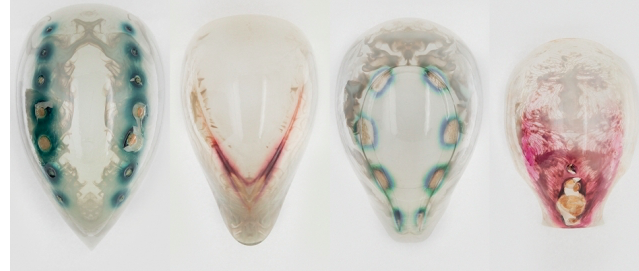A method for printing 3D objects that can control living organisms in predictable ways has been developed by an interdisciplinary team of researchers headed up at MIT. The technique may lead to 3D printing of biomedical tools, such as customised braces, that incorporate living cells to produce therapeutic compounds such as painkillers or topical treatments, the researchers claimed.
The new development was led by MIT Media Lab Associate Professor Neri Oxman and graduate students Rachel Soo Hoo Smith, Christoph Bader, and Sunanda Sharma, along with six others at MIT and at Harvard University’s Wyss Institute and Dana-Farber Cancer Institute.
“We call them hybrid living materials, or HLMs,” Smith said. For their initial proof-of-concept experiments, the team precisely incorporated various chemicals into the 3D printing process. These chemicals act as signals to activate certain responses in biologically engineered microbes, which are spray-coated onto the printed object. Once added, the microbes display specific colours or fluorescence in response to the chemical signals.
In their study, the team describes the appearance of these coloured patterns in a variety of printed objects, which they say demonstrates the successful incorporation of the living cells into the surface of the 3D-printed material, and the cells’ activation in response to the selectively placed chemicals.
The objective is to make a robust design tool for producing objects and devices incorporating living biological elements, made in a way that is as predictable and scalable as other industrial manufacturing processes.
The team uses a multistep process to produce their hybrid living materials. First, they use a commercially available multimaterial inkjet-based 3D printer, and customised recipes for the combinations of resins and chemical signals used for printing. For example, they found that one type of resin, normally used just to produce a temporary support for overhanging parts of a printed structure and then dissolved away after printing, could produce useful results by being mixed in with the structural resin material. The parts of the structure that incorporate this support material become absorbent and are able to retain the chemical signals that control the behaviour of the living organisms.
Finally, the living layer is added: a surface coating of hydrogel — a gelatinous material composed mostly of water but providing a stable and durable lattice structure — is infused with biologically engineered bacteria and spray-coated onto the object.
“We can define very specific shapes and distributions of the hybrid living materials and the biosynthesised products, whether they be colours or therapeutic agents, within the printed shapes,” Smith said. Some of these initial test shapes were made as silver-dollar-sized disks, and others in the form of colourful face masks, with the colours provided by the living bacteria within their structure. The colours take several hours to develop as the bacteria grow, and then remain stable once they are in place.
“There are exciting practical applications with this approach, since designers are now able to control and pattern the growth of living systems through a computational algorithm,” Oxman added. “Combining computational design, additive manufacturing, and synthetic biology, the HLM platform points toward the far-reaching impact these technologies may have across seemingly disparate fields, ‘enlivening’ design and the object space.”
The printing platform the team used allows the material properties of the printed object to be varied precisely and continuously between different parts of the structure, with some sections stiffer and others more flexible, and some more absorbent and others liquid-repellent. Such variations could be useful in the design of biomedical devices that can provide strength and support while also being soft and pliable to provide comfort in places where they are in contact with the body.

